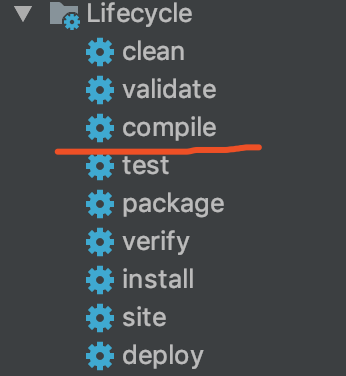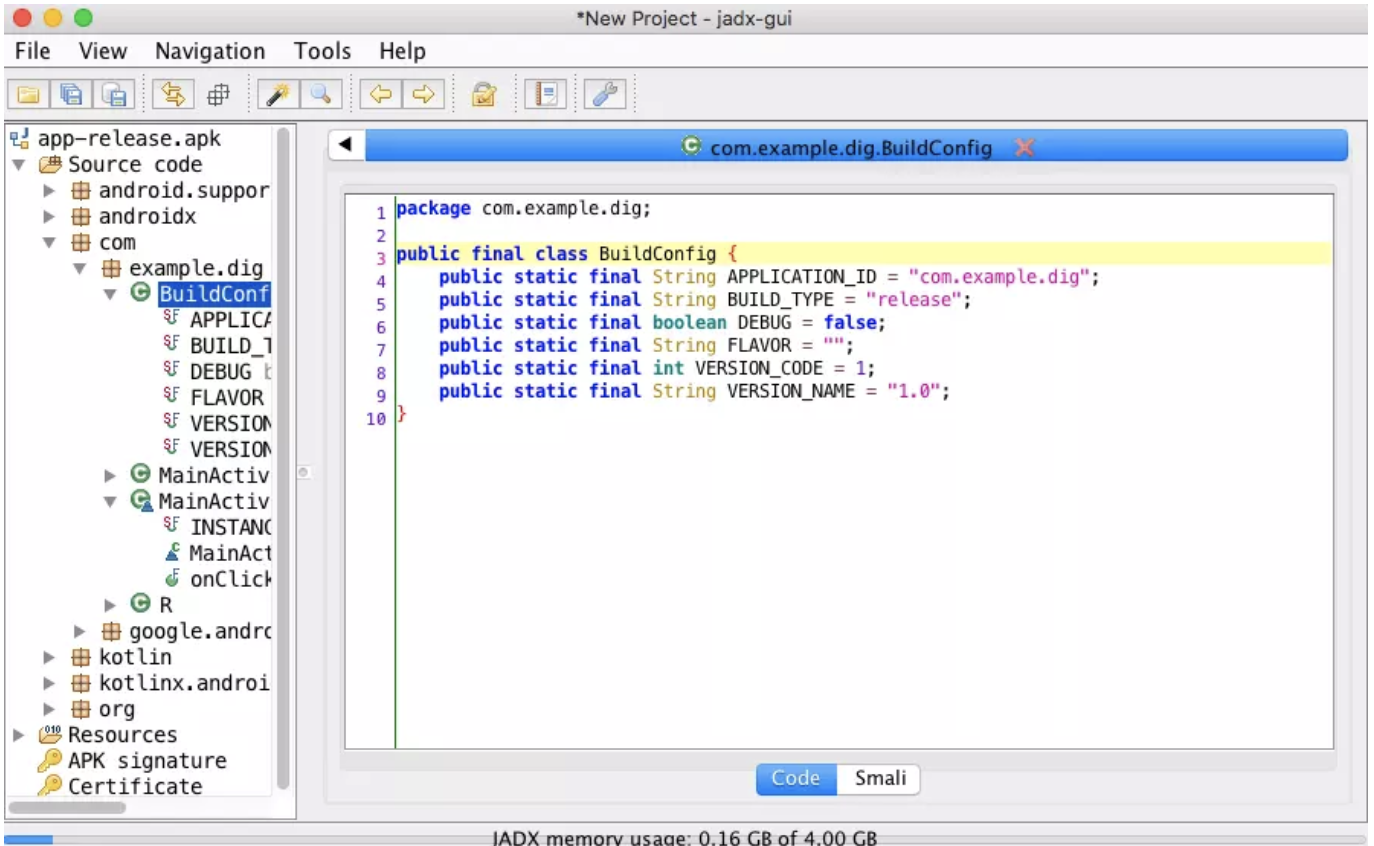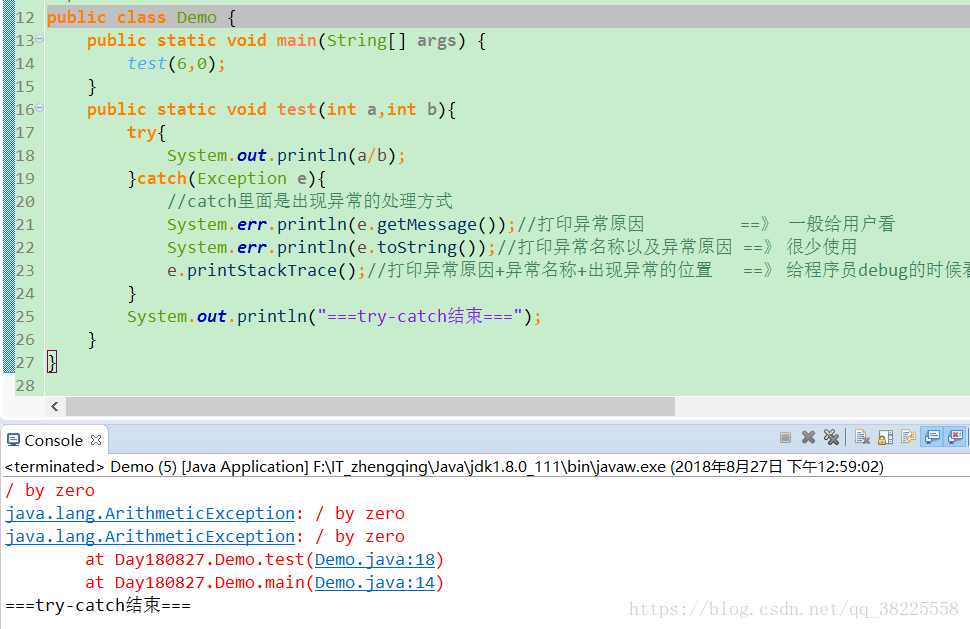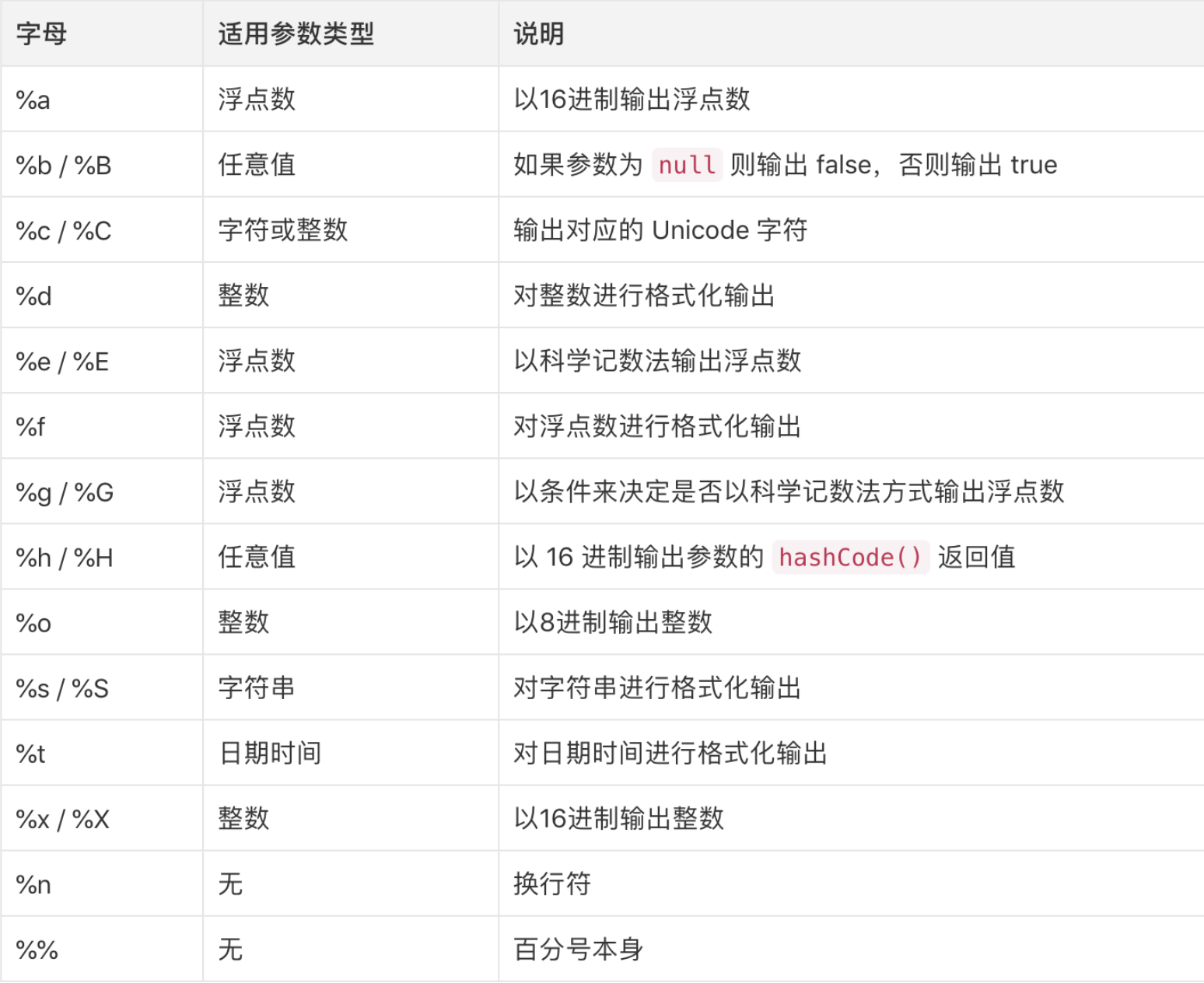工具篇-Java中一些utils

下边是整理的一些Java开发的utils,顺便吐槽下新浪博客的编辑器排版跟我写的博客一样 烂,所以改用博客园
一、字符串
1. Java中String与其他类型之间的转换
-
String与日期对象
1 public static SimpleDateFormat df1 = new SimpleDateFormat("dd/MMM/yyyy:HH:mm:ss", Locale.US); 2 public static SimpleDateFormat df2 = new SimpleDateFormat("yyyy-MM-dd HH:mm:ss", Locale.US); 3 df2.format(df1.parse(time_local));
-
String与八种基本类型(以int为例)
1 try { 2 int i = Integer.parseInt(str); 3 } catch (NumberFormatException e) { //str中可能有非数字 4 e.printStackTrace(); 5 }
2. 去掉字符串前面的0
- 使用replaceAll(正则或者目标字符串,要替换上的字符串)
1 String str = "000000001234034120"; 2 String newStr = str.replaceAll("^(0+)", ""); 3 System.out.println(newStr);
这里说明下replace和replaceAll的区别:replace的参数是char和CharSequence,即可以支持字符的替换,也支持字符串的替换;replaceAll的参数是regex,即基于正则表达式的替换。
- 使用replaceFirst(正则或者目标字符串,要替换上的字符串)
1 String str = "000000001234034120"; 2 String newStr = str.replaceFirst("^(0+)", ""); 3 System.out.println(newStr);
3. String.format方法
1 String formatted = String.format("%s今年%d岁。", "我", 25); // 打印结果:"我今年25岁。"
3. String == 和equals方法
-
“==”判断的是地址值,equals()方法判断的是内容
1 str1.equals(str2) 2 str1.hashCode()==str2.hashCode()
-
hashCode是一样的,hashCode相同可能是同一个对象,也可能是不同的对象,但是hashCode不同就肯定是不同的对象。
如果两个对象equals相等,那么这两个对象的HashCode一定也相同
如果两个对象的HashCode相同,不代表两个对象就相同,只能说明这两个对象在散列存储结构中,存放于同一个位置 - equals和equalsIgnoreCase方法对比
equals方法来自于Object类,默认比较两个对象的内存地址,equals在把对象放入HashMap中会被掉用;
equalsIgnoreCase是String特有的方法,比较的是两个String对象是否相等(并且忽略大小写)
4. StringUtils的join方法
-
包路径:org.apache.commons.lang3.StringUtils;
- 用法:将数组元素用特殊连接符连接
StringUtils.join(array, "-")
- 源码:

/** * <p>Joins the elements of the provided array into a single String * containing the provided list of elements.</p> * * <p>No delimiter is added before or after the list. * Null objects or empty strings within the array are represented by * empty strings.</p> * * <pre> * StringUtils.join(null, *) = null * StringUtils.join([], *) = "" * StringUtils.join([null], *) = "" * StringUtils.join(["a", "b", "c"], ';') = "a;b;c" * StringUtils.join(["a", "b", "c"], null) = "abc" * StringUtils.join([null, "", "a"], ';') = ";;a" * </pre> * * @param array the array of values to join together, may be null * @param separator the separator character to use * @return the joined String, {@code null} if null array input * @since 2.0 */ public static String join(final Object[] array, final char separator) { if (array == null) { return null; } return join(array, separator, 0, array.length); }
5. URLEncode编码 与 URLDecode解码
String mytext = java.net.URLEncoder.encode("中国", "utf-8");
String mytext2 = java.net.URLDecoder.decode(mytext, "utf-8");
这两条语句在同一个页面中的话,得到的结果是:
mytext: %E4%B8%AD%E5%9B%BD
mytex2: 中国
5. 字符编码和字符串所占字节数
二、Spring
1. JSONField 注解
-
指定字段的名称
1 @JSONField(name="role_name") 2 private String roleName;
-
使用format制定日期格式
public class A { // 配置date序列化和反序列使用yyyyMMdd日期格式 @JSONField(format="yyyyMMdd") public Date date; }
-
指定字段的顺序
1 public static class VO { 2 @JSONField(ordinal = 3) 3 private int f0; 4 5 @JSONField(ordinal = 2) 6 private int f1; 7 8 @JSONField(ordinal = 1) 9 private int f2;
-
使用serialize/deserialize指定字段不序列化
1 public class A { 2 @JSONField(serialize=false) 3 public Date date; 4 }
三、随机数
- 使用Random类
Random类可以产生 boolean、int、long、float, byte 数组以及 double 类型的随机数,这是它与 random()方法最大的不同之处,random()方法只能产生double类型的 0~1的随机数。
Random 类位于 java.util 包中,该类常用的有如下两个构造方法。
Random():该构造方法使用一个和当前系统时间对应的数字作为种子数,然后使用这个种子数构造 Random 对象。
Random(long seed):使用单个 long 类型的参数创建一个新的随机数生成器。例如:
1 public static void main(String[] args) 2 { 3 Random r=new Random(); 4 double d1=r.nextDouble(); //生成[0,1.0]区间的小数 5 double d2=r.nextDouble()*7; //生成[0,7.0]区间的小数 6 int i1=r.nextInt(10); //生成[0,10]区间的整数 7 int i2=r.nextInt(18)-3; //生成[-3,15]区间的整数 8 long l1=r.nextLong(); //生成一个随机长整型值 9 boolean b1=r.nextBoolean(); //生成一个随机布尔型值True或者False 10 float f1=r.nextFloat{); //生成一个随机浮点型值 11 }
- Math类的random()方法
该方法没有参数,它默认会返回大于等于0.0、小于1.0的double类型随机数。如下:
1 public static void main(String[] args) 2 { 3 int min=0; //定义随机数的最小值 4 int max=100; //定义随机数的最大值 5 //产生一个1~100的数 6 int s=(int)min+(int)(Math.random()*(max-min)); 7 }
- 当前日期和时间
- 时钟序列
- 全局唯一的IEEE机器识别号,如果有网卡,从网卡MAC地址获得,没有网卡以其他方式获得。
1 //获得指定数目的UUID 2 public static String[] getUUID(int number){ 3 if(number < 1){ 4 return null; 5 } 6 String[] retArray = new String[number]; 7 for(int i=0;i){ 8 retArray[i] = getUUID(); 9 } 10 return retArray; 11 } 12 //获得一个UUID 13 public static String getUUID(){ 14 String uuid = UUID.randomUUID().toString(); 15 //去掉“-”符号 16 return uuid.replaceAll("-", ""); 17 }
四、文件
1. FileUtils
具有封装的读写文件、复制文件等功能。例如:
1 import org.apache.commons.io.FileUtils; 2 List lines = new ArrayList(); 3 ... 4 FileUtils.writeLines(new File("/Users/admin/1.txt"), lines, true); 5 String result = FileUtils.readFileToString(new File("/Users/admin/1.txt"), "UTF-8");
2. 配置文件读取
一般情况下,我们用到的资源文件(各种xml,properites,xsd文件等)都放在src/main/resources下面,利用maven打包时,maven能把这些资源文件打包到相应的jar或者war里。在程序中就可以直接读取了,例如:
-
properties文件
1 InputStream input =Thread.currentThread().getContextClassLoader().getResourceAsStream("abc.properties"); 2 Properties prop = new Properties(); 3 prop.load(input);
-
yaml文件
1 InputStream inputStream = Thread.currentThread().getContextClassLoader().getResourceAsStream(yamlPath); 2 Yaml yaml = new Yaml(); 3 HashMap map = yaml.loadAs(inputStream, HashMap.class);
五、Java反射
1. 反射取私有方法
- 在调用私有方法时必须用getDeclaredMethod,getDeclaredMethod和getMethod区别如下:
getMethod:Returns a object that reflects the specified public member method of the class or interface represented by this object.(只能获取public的方法)
getDeclaredMethod:Returns a object that reflects the specified declared method of the class or interface represented by this object. (能获取类中所有方法)
- 调用私有方法时除了在调用之前需要设置setAccessible(true)
2. Java Agent(JDK 1.5及以上)
3. Java Assist
六、网络
1. 主机名转IP
1 String ip = InetAddress.getByName(hostName).getHostAddress();
2. HttpClient
HttpClient httpclient = new DefaultHttpClient(); httpclient.getParams().setParameter(CoreConnectionPNames.CONNECTION_TIMEOUT, Config.20000);//连接时间20s httpclient.getParams().setParameter(CoreConnectionPNames.SO_TIMEOUT, 60000);//数据传输时间60s
不设置的话如果服务器无响应,可能返回(404 50x),如果没有返回则java线程会一直等待。
七、缓存
1. Guava Cache
注:通过RemovalNotification.getCause()可以知道该对象被移除的原因1 public enum RemovalCause { 2 //用户手动移除 3 EXPLICIT, 4 //用户手动替换 5 REPLACED, 6 //被垃圾回收 7 COLLECTED, 8 //超时过期 9 EXPIRED, 10 //由于缓存大小限制 11 SIZE; 12 }
八、日期
1. TimeUnit
TimeUnit提供了各种时间方法,比如常用的toMillis、toNaNos、sleep(Long timeout)等等,可读性极高,使用方便且性能也不错,具体使用方法参考:Java-TimeUnit类常用方法详解,对比一下:
1 // TimeUnit 2 TimeUnit.MILLISECONDS.sleep(10); 3 TimeUnit.SECONDS.sleep(10); 4 TimeUnit.MINUTES.sleep(10); 5 6 // 原生Thread方法 7 Thread.sleep(10); 8 Thread.sleep(10*1000); 9 Thread.sleep(10*60*1000);
2. Java8只取年月日的java.util.Date(时分秒清零)对象
1 // set current date 2 date = new Date(); 3 Calendar cal1 = Calendar.getInstance(); 4 cal1.setTime(date); 5 // clear minute second milliSecond 6 cal1.set(Calendar.MINUTE, 0); 7 cal1.set(Calendar.SECOND, 0); 8 cal1.set(Calendar.MILLISECOND, 0); 9 date = cal1.getTime();
3. java.util.Date转java.sql.Date
1 Date utilDate = new Date();//uilt.Date 2 System.out.println("utilDate : " + utilDate); 3 SimpleDateFormat format = new SimpleDateFormat("yyyy-MM-dd HH:mm:ss"); 4 System.out.println("format : " + format.format(utilDate)); 5 6 System.out.println("**********************************************"); 7 8 Timestamp sqlDate = new Timestamp(utilDate.getTime());//uilt.Date转sql.Date 9 System.out.println("sqlDate : " + sqlDate); 10 System.out.println("format : " + format.format(sqlDate));
九、代码规范
1. HashMap初始容量设置
-
根据阿里巴巴Java开发手册上建议HashMap初始化时设置已知的大小,如果不超过16个,那么设置成默认大小16:
集合初始化时, 指定集合初始值大小。
说明: HashMap使用HashMap(int initialCapacity)初始化,
正例:initialCapacity = (需要存储的元素个数 / 负载因子) + 1。注意负载因子(即loader factor)默认为0.75, 如果暂时无法确定初始值大小,请设置为16(即默认值)。
反例:HashMap需要放置1024个元素,由于没有设置容量初始大小,随着元素不断增加,容量7次被迫扩大,resize需要重建hash表,严重影响性能
2. 减少if/else书写(一般嵌套不超过三层为好)
- 提前return
1 if (condition) { 2 // do something 3 } else { 4 return xxx; 5 }
这种情况条件取反,干掉else
1 if (!condition) { 2 return xxx; 3 } 4 5 // do something
- 策略模式
有种情况是根据不同的参数走不同的逻辑,先看一般写法:
1 if (strategy.equals("fast")) { 2 // 快速执行 3 } else if ("strategy.equals("normal")) { 4 // 正常执行 5 } else if ("strategy.equals("smooth")) { 6 // 平滑执行 7 } else if ("strategy.equals("slow")) { 8 // 慢慢执行 9 }
其实可以用枚举
1 public enum Stategy { 2 FAST{ 3 @Override 4 public void run() { 5 System.out.println("fast---"); 6 } 7 }, 8 NORMAL{ 9 @Override 10 public void run() { 11 System.out.println("normal---"); 12 } 13 }, 14 SMOOTH{ 15 @Override 16 public void run() { 17 System.out.println("smooth---"); 18 } 19 }, 20 SLOW { 21 @Override 22 public void run() { 23 System.out.println("slow---"); 24 } 25 }; 26 27 public abstract void run(); 28 }
最后,可以通过param执行不同逻辑
1 Strategy strategy = Strategy.valueOf(param); 2 Strategy.run();
- 用Optional
1 if (user == null) { 2 // do action 1 3 } else { 4 // do action2 5 }
可以改为
1 Optional<User> userOptional = Optional.ofNullable(user); 2 userOptional.map(action1).orElse(action2);
十、thrift
1. thrift文件的使用
最近看别人的老项目用到了thrift文件,以前没用过,挺好玩的,记录一下。刚开始从gitlab上clone下来以后,会发现有些包会爆红:

同时src目录下有thrift文件

问了下同事说是要compile一下,还得先安装0.9.3的thrift(还有一些插件,一定要FQ,如果没有全局设置的话,需要在shell里边重新设置下)
1 export http_proxy=http://127.0.0.1:1087; export https_proxy=http://127.0.0.1:1087
工程里修改pom文件
1 <build> 2 <plugins> 3 <plugin> 4 <artifactId>maven-assembly-plugin</artifactId> 5 <configuration> 6 <descriptorRefs> 7 <descriptorRef>jar-with-dependencies</descriptorRef> 8 </descriptorRefs> 9 </configuration> 10 </plugin> 11 <plugin> 12 <groupId>org.apache.maven.plugins</groupId> 13 <artifactId>maven-shade-plugin</artifactId> 14 <executions> 15 <execution> 16 <phase>package</phase> 17 <goals> 18 <goal>shade</goal> 19 </goals> 20 </execution> 21 </executions> 22 </plugin> 23 <plugin> 24 <groupId>org.apache.thrift.tools</groupId> 25 <artifactId>maven-thrift-plugin</artifactId> 26 <version>0.1.11</version> 27 <configuration> 28 <thriftSourceRoot>src/main/if</thriftSourceRoot> 29 </configuration> 30 <executions> 31 <execution> 32 <id>thrift-sources</id> 33 <phase>generate-sources</phase> 34 <goals> 35 <goal>compile</goal> 36 </goals> 37 </execution> 38 </executions> 39 </plugin> 40 <plugin> 41 <groupId>org.apache.maven.plugins</groupId> 42 <artifactId>maven-compiler-plugin</artifactId> 43 <configuration> 44 <source>1.8</source> 45 <target>1.8</target> 46 <encoding>UTF-8</encoding> 47 </configuration> 48 </plugin> 49 </plugins> 50 </build>
和
1 <!--thrift--> 2 <dependency> 3 <groupId>org.apache.thrift</groupId> 4 <artifactId>libthrift</artifactId> 5 <version>0.11.0</version> 6 </dependency>
最后maven编译即可

最后可以从target目录下看到编译好的java文件:

注:IDEA编译的话,也需要安装thrift插件(参见:https://www.cnblogs.com/lcmichelle/p/10743081.html)
十一、反编译代码
1. 反编译工具Jadx
安装好之后找到编译好的jadx-gui可执行文件运行
比如目录下:/Users/admin/jadx/build/jadx/bin/jadx-gui

十二、集合
1. 迭代器的使用
使用迭代器可以边访问集合边删除元素
Iterator<String> iterator = all.iterator();//实例化迭代器 while(iterator.hasNext()){ String str=iterator.next();//读取当前集合数据元素 if("b".equals(str)){ //all.remove(str);//使用集合当中的remove方法对当前迭代器当中的数据元素值进行删除操作(注:此操作将会破坏整个迭代器结构)使得迭代器在接下来将不会起作用 iterator.remove(); }else{ System.out.println( str+" "); } }
十三、单元测试
1. jacoco工具
最近用了jacoco工具,感觉挺好使的,单元测试当然也可以使用IDE自带的run with coverag。Jacoco有命令行和Pom配置两种方式,命令行方式就是在工程根目录下执行以下命令,如果多个模块可以到子模块下执行:
1 mvn clean test org.jacoco:jacoco-maven-plugin:0.7.4.201502262128:prepare-agent install -Dmaven.test.failure.ignore=true
然后在target文件下生成jacoco-ut文件夹,文件夹下可以看到index.html文件,用浏览器打开就是单元覆盖率报告。


另一种方式就是Pom配置文件的方式,注意dataFile和outputDirectory一定要写清楚,另外一定要有test/java这个目录
1 <dependency> 2 <groupId>org.testng</groupId> 3 <artifactId>testng</artifactId> 4 <version>6.9.6</version> 5 <scope>test</scope> 6 <optional>true</optional> 7 </dependency> 8 <dependency> 9 <groupId>org.jacoco</groupId> 10 <artifactId>jacoco-maven-plugin</artifactId> 11 <version>0.7.4.201502262128</version> 12 <scope>test</scope> 13 </dependency> 14 <dependency> 15 <groupId>junit</groupId> 16 <artifactId>junit</artifactId> 17 <version>4.12</version> 18 <scope>test</scope> 19 </dependency>
1 <plugin> 2 <groupId>org.apache.maven.plugins</groupId> 3 <artifactId>maven-shade-plugin</artifactId> 4 <version>2.4.1</version> 5 <executions> 6 <!-- Run shade goal on package phase --> 7 <execution> 8 <phase>package</phase> 9 <goals> 10 <goal>shade</goal> 11 </goals> 12 <configuration> 13 <!--<relocations>--> 14 <!--<relocation>--> 15 <!--<pattern>com.google.protobuf</pattern>--> 16 <!--<shadedPattern>shaded.com.google.protobuf</shadedPattern>--> 17 <!--</relocation>--> 18 <!--</relocations>--> 19 <filters> 20 <filter> 21 <artifact>org.apache.flink:*</artifact> 22 <excludes> 23 <!-- exclude shaded google but include shaded curator --> 24 <exclude>org/apache/flink/shaded/com/**</exclude> 25 <exclude>web-docs/**</exclude> 26 </excludes> 27 </filter> 28 <filter> 29 <!-- Do not copy the signatures in the META-INF folder. 30 Otherwise, this might cause SecurityExceptions when using the JAR. --> 31 <artifact>*:*</artifact> 32 <excludes> 33 <exclude>META-INF/*.SF</exclude> 34 <exclude>META-INF/*.DSA</exclude> 35 <exclude>META-INF/*.RSA</exclude> 36 </excludes> 37 </filter> 38 </filters> 39 <createDependencyReducedPom>false</createDependencyReducedPom> 40 </configuration> 41 </execution> 42 </executions> 43 </plugin> 44 45 <plugin> 46 <groupId>org.apache.maven.plugins</groupId> 47 <artifactId>maven-compiler-plugin</artifactId> 48 <version>3.1</version> 49 <configuration> 50 <source>1.8</source> <!-- If you want to use Java 8, change this to "1.8" --> 51 <target>1.8</target> <!-- If you want to use Java 8, change this to "1.8" --> 52 </configuration> 53 </plugin> 54 <plugin> 55 <groupId>org.apache.maven.plugins</groupId> 56 <artifactId>maven-surefire-plugin</artifactId> 57 <version>2.19</version> 58 <configuration> 59 <!--<argLine>-Xmx256M ${jacocoArgLine}</argLine> --> 60 <!--<skip>false</skip> --> 61 <!--<testFailureIgnore>false</testFailureIgnore> --> 62 <!--<includes></includes>--> 63 <!--<includes>--> 64 <!--<include>**/*Test.java</include>--> 65 <!--</includes>--> 66 <!--<argLine>-XX:-UseSplitVerifier</argLine>--> 67 </configuration> 68 </plugin> 69 70 <plugin> 71 <groupId>org.jacoco</groupId> 72 <artifactId>jacoco-maven-plugin</artifactId> 73 <version>0.7.4.201502262128</version> 74 <configuration> 75 <!--<includes>--> 76 <!--<include>com/src/**/*</include>--> 77 <!--</includes>--> 78 </configuration> 79 <executions> 80 <execution> 81 <id>pre-test</id> 82 <goals> 83 <goal>prepare-agent</goal> 84 </goals> 85 <configuration> 86 <propertyName>jacocoArgLine</propertyName> 87 </configuration> 88 </execution> 89 <execution> 90 <id>post-test</id> 91 <phase>test</phase> 92 <goals> 93 <goal>report</goal> 94 </goals> 95 </execution> 96 <execution> 97 <id>post-unit-test</id> 98 <phase>test</phase> 99 <goals> 100 <goal>report</goal> 101 </goals> 102 <configuration> 103 <dataFile>/Users/admin/Desktop/test/target/jacoco.exec</dataFile> 104 <outputDirectory>/Users/admin/Desktop/test/target/target/jacoco-u</outputDirectory> 105 </configuration> 106 </execution> 107 </executions> 108 </plugin>
十四、Protobuf
1. Protobuf里的数组
Protobuf文件中使用repeated定义数组类型元素,Java设置的时候使用addEntitites而不是set
十五、Maven
1. -DskipTests和-Dmaven.test.skip=true跳过单元测试
mvn clean package -DskipTests,不执行测试用例,但编译测试用例类生成相应的class文件至target/test-classes下。
mvn clean package -Dmaven.test.skip=true,不执行测试用例,也不编译测试用例类
2. 本地仓库导入官方仓库没有的jar包
用到Maven如下命令:
mvn install:install-file
-DgroupId=包名
-DartifactId=项目名
-Dversion=版本号
-Dpackaging=jar
-Dfile=jar文件所在路径
比如执行以下命令:
mvn install:install-file -Dfile=D:\lib\jnotify-0.94.jar -DgroupId=net.contentobjects -DartifactId=jnotify -Dversion=0.94 -Dpackaging=jar -DgeneratePom=true -DcreateChecksum=true
工程中使用时在pom.xml中添加如下内容:
<dependency>
<groupId>net.contentobjects</groupId>
<artifactId>jnotify</artifactId>
<version>0.94</version>
<<type>jar</type>
</dependency>
十六、日志打印
1. 异常打印
/**
* String getMessage() :返回此 throwable 的详细消息字符串。
* String toString() : 返回此 throwable 的简短描述。
* void printStackTrace():将此 throwable 及其追踪输出至标准错误流。 (即 调用此方法会把完整的异常信息打印到控制台)
* @author 郑清
*/
public class Demo {
public static void main(String[] args) {
test(6,0);
}
public static void test(int a,int b){
try{
System.out.println(a/b);
}catch(Exception e){
//catch里面是出现异常的处理方式 下面err是以红色打印信息
System.err.println(e.getMessage());//打印异常原因 ==》 一般给用户看
System.err.println(e.toString());//打印异常名称以及异常原因 ==》 很少使用
e.printStackTrace();//打印异常原因+异常名称+出现异常的位置 ==》 给程序员debug的时候看
}
System.out.println("===try-catch结束===");
}
}







